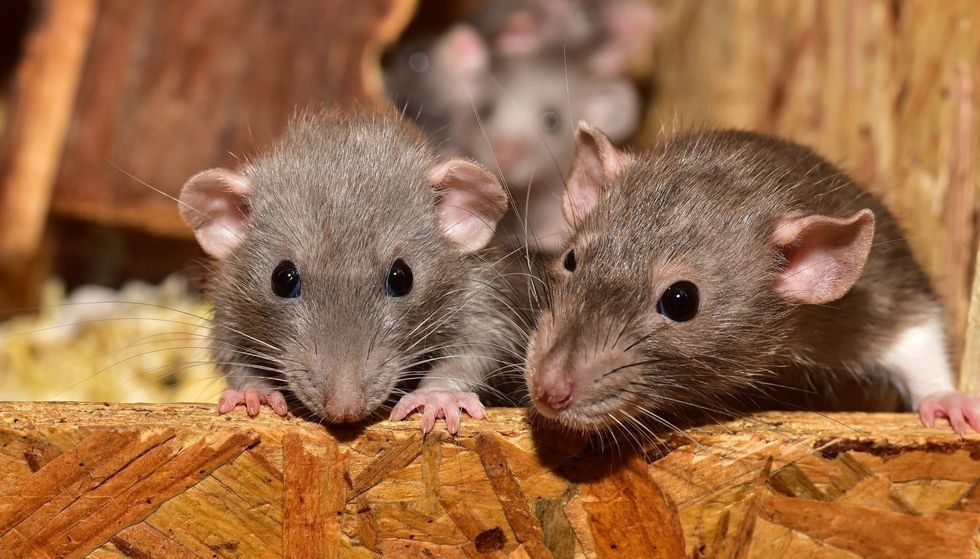Have you ever heard of a Philippine forest rat? A Philippine forest rat is a rodent species that belongs to the Rodentia order. They are also known as chanum torres. They are widely spread across the archipelago of the Philippines. The population of this rat species is stable and thriving across its range of habitats.
Here are some fun, engaging, and interesting facts on Philippine forest rats for your perusal. Afterward, do have a look at our other articles on the field vole and flying squirrel.
Philippine Forest Rat Interesting Facts
What type of animal is a Philippine forest rat?
A Philippine forest rat is a species of rodent that are widely spread across the Philippines region.
What class of animal does a Philippine forest rat belong to?
A Philippine forest rat is a species of rodent that belong to the mammalian class due to its ability to give birth to young ones. They come under the order of Rodentia of the Muridae family. Its scientific name is Rattus everetti. They are also called Chanum Torres.
How many Philippine forest rats are there in the world?
There is no accurate and rough estimate of the total number of Philippine forest rats in the world. Their population is abundant in its range.
Where does a Philippine forest rat live?
Philippine forest rats are only found in the Philippines. They are found throughout the archipelago. They are seen in Mindanao Islands and other islands.
What is a Philippine forest rat's habitat?
Philippine forest rats are usually seen in forest patches and other shrubby areas.
Who do Philippine forest rats live with?
Philippine forest rats prefer to live in groups, and their groups are called packs.
How long does a Philippine forest rat live?
The Philippine forest rat has an average lifespan of around two to three years. This may vary according to the habitat and diet.
How do they reproduce?
The Philippine forest rat species breed through the process of sexual mating. The breeding process in this species goes on for the entire year, and the female is capable of producing several litters per year, comprising eight to nine pups. The pups become sexually mature after around 10 weeks of being born.
What is their conservation status?
A Philippine forest rat is listed as the least concerned species by the IUCN Red List. Their population is stable and does not face any extinction threat.
Philippine Forest Rat Fun Facts
What do Philippine forest rats look like?
Philippine forest rats are usually brown, tan, black, or gray in color. They have a long tail which helps in controlling the movement. The color of the fur is usually brown. They are very similar in appearance to other forest rat species.
How cute are they?
The cuteness of this mammal is highly subjective, depending on the individual. For some people, this forest rat species is extremely cute, while for others, these creatures are somewhat repulsive in appearance.
How do they communicate?
Philippine forest rats use sounds and smell to communicate with each other. They produce ultrasonic sounds that are not audible to humans.
How big is a Philippine forest rat?
Philippine forest rat is a medium-sized rat and has a length of 7.5 in (19 cm).
How fast can a Philippine forest rat run?
This mammal species is extremely swift when it comes to moving around. The ability to run at speeds of up to eight mph (12.8 kph) helps them stay safe from predators.
How much does a Philippine forest rat weigh?
On an average scale, an adult Philippine forest rat weighs around 0.55 lb (0.2 kg).
What are the male and female names of the species?
As a Philippine forest rat is a rat, its species is Rattus everetti. A male Philippine forest rat is called a buck and an unmated female are called does, and a pregnant or parent female is called a dam.
What would you call a baby Philippine forest rat?
A baby Philippine forest rat is called a kitten or pup.
What do they eat?
Philippine forest rats are omnivores. Their diet includes insects, snails, slugs, invertebrates, and worms. The known predators are hawks, eagles, and owls.
Are they dangerous?
Forest rats might be dangerous when they feel irritated by the environment. Their bite can cause a certain type of disease.
Would they make a good pet?
Philippine forest rats are wild rats and are not suitable for keeping as pets.
Did you know...
Philippine forest rats are widespread through their range of habitat and primarily feed on a diet of worms and insects.
Rats in the Philippines
There are several types of rats in the Philippines. Two common types are the Black rat or sewer rat and Brown rat or common rats, which are found near houses. There are also several other wild rats like large luzon forest rat, large tooth hairy-tailed rat, and so on.
Origins of the rat species
The rat species is known to have originated from Asia and Australia. In the mid-1500s, this mammal species was brought to Europe and to North America in the 1750s.
Here at Kidadl, we have carefully created lots of interesting family-friendly animal facts for everyone to discover! For more relatable content, check out these bat-eared fox facts and jackal facts pages.
You can even occupy yourself at home by coloring in one of our free printable philippine forest rat coloring pages.









